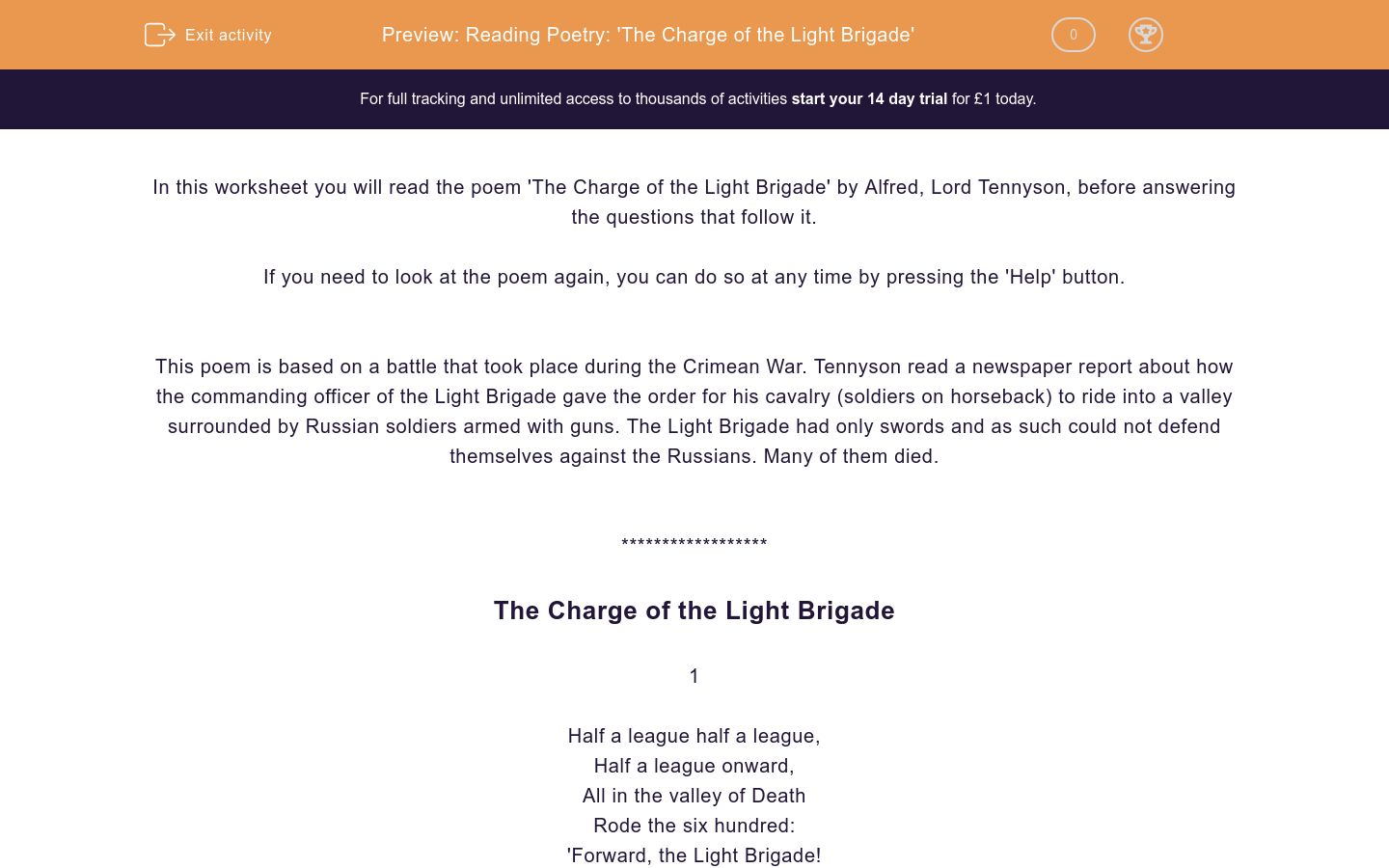

The use of “falling” rhythm, in which the stress is on the first beat of each metrical unit, and then “falls off” for the rest of the length of the meter, is appropriate in a poem describing the fall of the British brigade. Each line has two stressed syllables moreover, each stressed syllable is followed by two unstressed syllables, making the rhythm dactylic.

This poem comprises six stanzas varying in length from six to twelve lines. The world marvelled at the courage of the soldiers indeed, their glory is undying: the poem states these noble 600 men remain worthy of honour and tribute today.

As the brigade rode “back from the mouth of hell,” soldiers and horses collapsed few remained to make the backward journey. Canons behind and on both sides of the soldiers now attacked them with shots and shells. Then they rode back from the offensive, but they had lost many men so they were “not the six hundred” any more. They rode into the artillery smoke and broke through the enemy line, destroying their Cossack and Russian opponents. The soldiers struck the enemy gunners with their bare swords and charged at the enemy army while the rest of the world looked on in wonder. Still, they rode courageously forward toward their own deaths: “Into the jaws of Death / Into the mouth of hell / Rode the six hundred.” The 600 soldiers were attacked violently by the shots of shells of canons in front and on both sides of them. Not a single soldier was discouraged or distressed by the command to charge forward, even though all the soldiers realized that their commander had made a terrible mistake: “Someone had blundered.” The role of the soldier is to obey and “not to make a reply…not to reason why,” so they followed orders and rode into the “valley of death.”


 0 kommentar(er)
0 kommentar(er)
